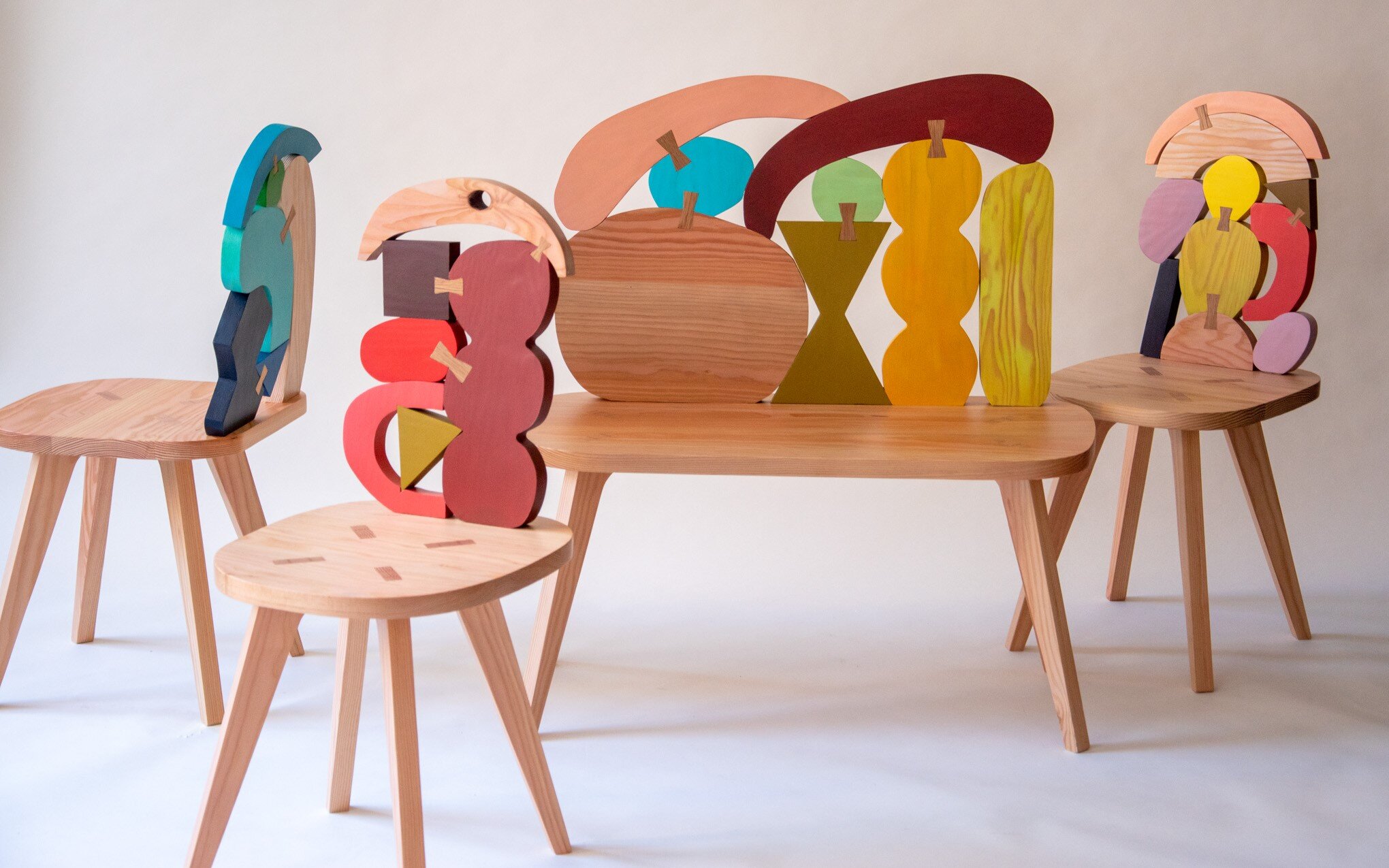Pistachio green, acid-wash anything, and mango sherbet orange - all colors I've tended to veer from with my stark, Apple Store-like wardrobe. B&W color combinations were my staple as an Editorial Apprentice at The Psychology of Fashion, a master's student at Condé Nast College, and Editorial Staff writer on my school's paper. On an average day before lockdown, I'd take the Northern Line to Soho for school, head to an experiential pop-up store on Bond Street for an editorial assignment, and meet with my partner in Chinatown for dinner before going home. Style-wise I stuck with minimalist designs and lowkey looks because my day was busy enough without worrying about whether or not a lime-green fur-trimmed cardigan would be too kitsch for something I had scheduled that day. Like other students starting out in their careers, I was concerned with legitimacy and always wanted to feel serious and professional in my clothing. Monochrome and neutrals achieved this: there’s something about high contrast that says “I’m here”.
When lockdown happened, as per the status quo, my grey jeans were traded-in for sweatpants, leather pants for leggings, and my plain tees stayed the same. After two or three months, I started to grow predictably bored of these outfits and wanted a bit of fun to offset the same plain loungewear. Curiously, I took up stalking the pink and blue Party Pajama sets from The Sleeper and unironically loading my online shopping cart with "Carpe Diem" sweaters and "Livin It Up'" tees from Holiday the Label as a recreational activity. Fashion had fully become my distraction from what was going on with the world in a way that it never was before. It’s function, it’s purpose, had changed.
Yours truly in House of Sunny’s Peggy Cardigan.
Nevertheless, when I went to my wardrobe to look for multicolored outfits to play with, only a few odd garments fit the bill. Among the stacks of plain white tees was a hot-pink Betsey Johnson floral dress I wore to my best friend's birthday at The Madonna Inn last summer, a Diamond X Basquiat doodle denim jacket from The Broad Museum, and a vintage-inspired Fred Segal "Los Angeles" tee. The slim pickings didn't necessarily surprise me. It affirmed that wearing plain attire was how I managed the tension I faced between being a fun, extroverted person who wanted to feel professional, serious, and focused in work settings. Personal style plays a significant role in our everyday lives in this idiosyncratic way, so it's important to understand where it comes from and how to fine-tune it.
At The Psychology of Fashion, we use The Big 5 Personality Test framework to understand our personal style's profound connection to our psyche. The Big 5 Personality Test breaks down personality traits into five distinct categories: openness, conscientiousness, extroversion, agreeableness, neuroticism. By understanding where you score on these traits, you can reflect your deepest sense of self through style and obtain heightened self-knowledge. For me, a moderate-high extroversion score and a moderate-high neuroticism score correlates to my outgoing nature and my acute desire to want to guard myself. It rationalizes why I've always wanted to wear out-there designs, but make an effort to protect myself from foreseeable scrutiny and criticism from my peers. Maybe, I didn’t want to really be seen.
“My tendency of telling people "I'm here" through black, beige and white looks dissipated when there was nowhere to be.”
My tendency of telling people "I'm here" through black, beige and white looks dissipated when there was nowhere to be, so I started experimenting with my wardrobe by buying garments that catered exclusively to my moderate-high extroversion personality trait. Social opportunities dwindled, so that is what I subconsciously focused on. I ended up with an acid-wash pink hoodie, white birks, pistachio-colored pants, a lilac-colored button-down, and (finally) the lime-green fur-trimmed cardie. It was somehow suddenly surprisingly easy for me to wear these garments out. At first, on errands, and increasingly more once London started to open up again. By accepting and indulging in the extroverted side of myself, I began to feel renewed and in-touch with who I am and who I want to be. I was also happy to wear fun colors that imbued brightness in social settings when things were still so uncertain in the world on account of Covid-19.
Photograph of Donna Wilson’s ongoing design project “Abstract Assembly,” which was featured at this year’s London Design Festival.
Now, I feel more or less transformed. I wear bright colors whenever I feel like it and use the standout quality of specific pieces to draw out my extroverted side as self-motivation whenever I need to get a quote from someone for an article. On my last editorial assignment, I went to the London Design Festival and talked to one of the exhibitors, Donna Wilson, about her project called Abstract Assembly. Wearing a statement piece was almost like an ice-breaker for me. I couldn't exactly hide from my article's subject or shy away from my objective in a lime green cardigan. I also wasn't seen as any less serious or professional for wearing it - if anything, I matched Wilson's designs. Wilson said she was "unafraid to use color, even though most modernist designers stick to black and white." I nodded along to the comment, but on the inside, I felt affirmed.
Overall, I'd say catering exclusively to one of my personality traits was an exciting and positive experiment that helped me feel more connected to myself. Even if the style change only lasts for a few more months, I'll have the self-knowledge in my back pocket forever.
To discover your own Big 5 personality test scores, click below.













In the world of post-pandemic dressing, one word has taken social media by storm: cheugy (pronounced: chew-gee). In the worlds of fashion and lifestyle, cheugy describes a look, a thing or a person that’s considered out of date.